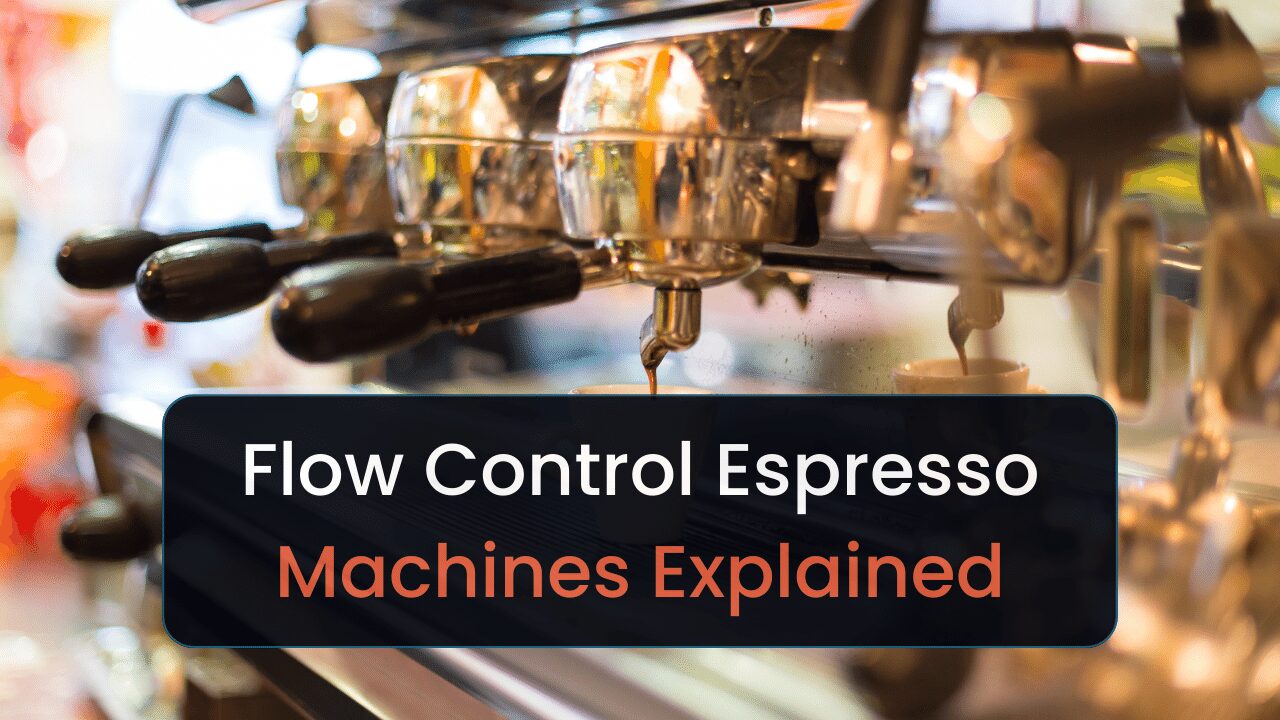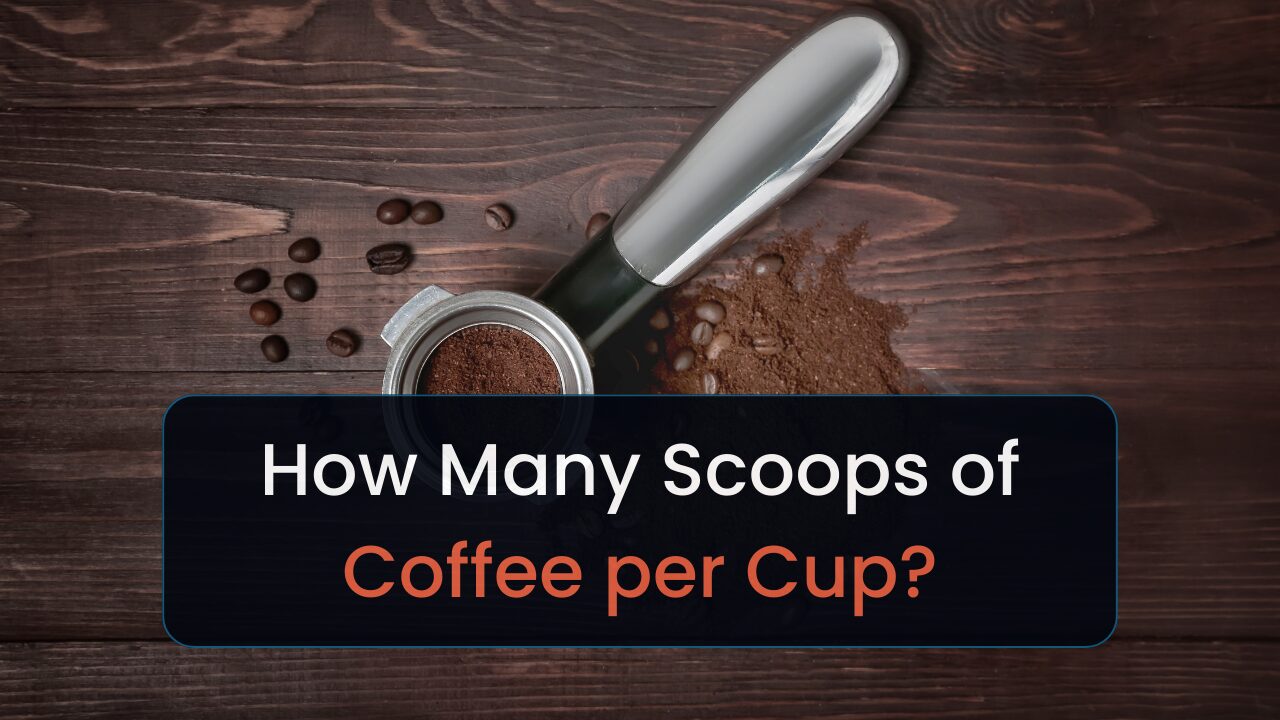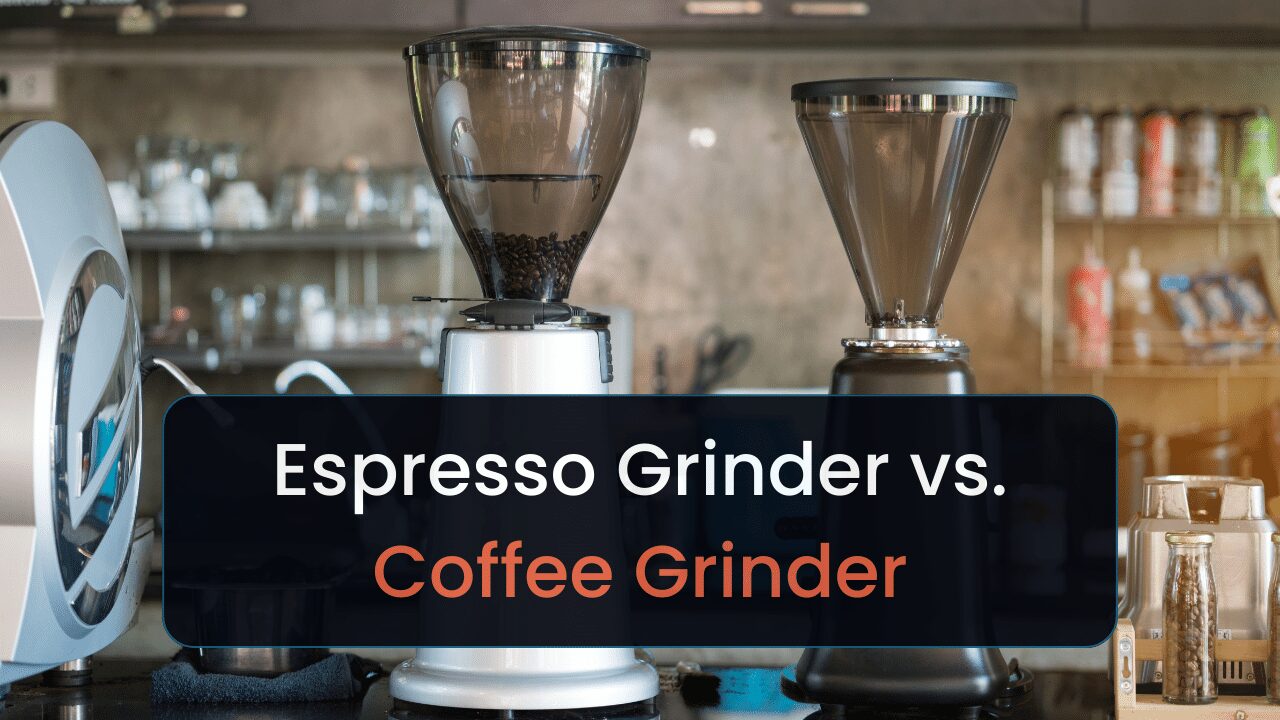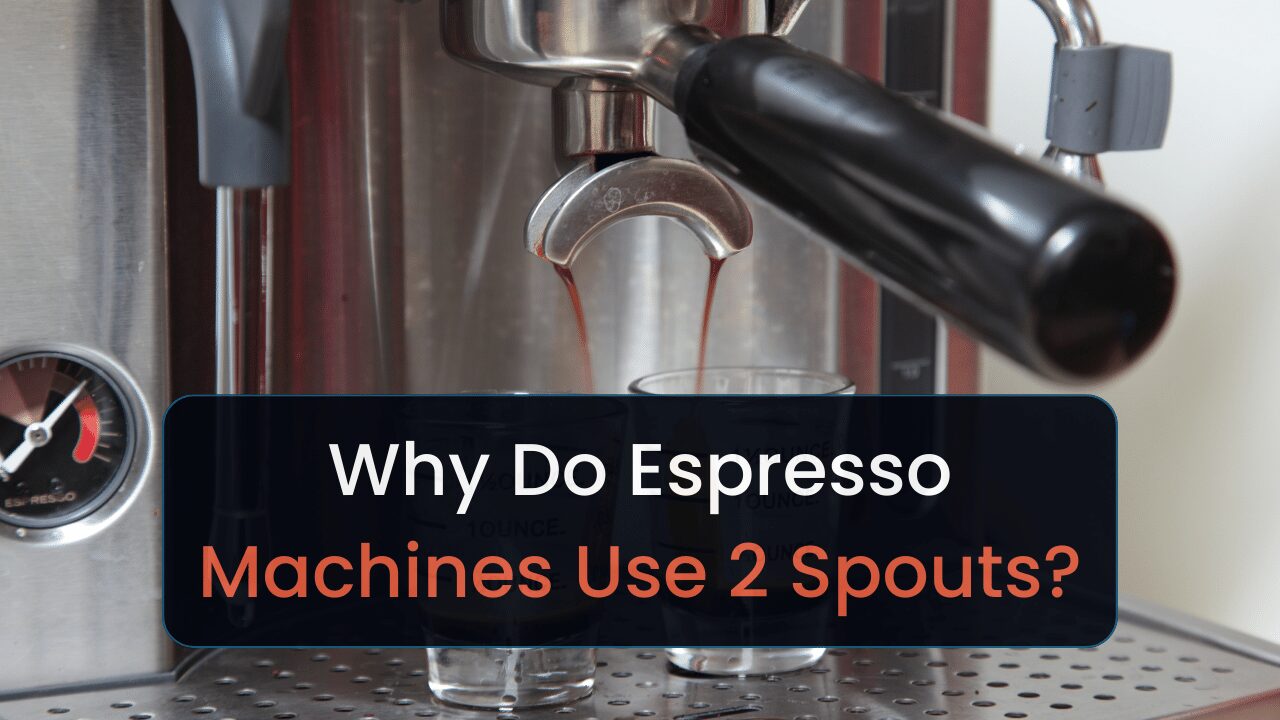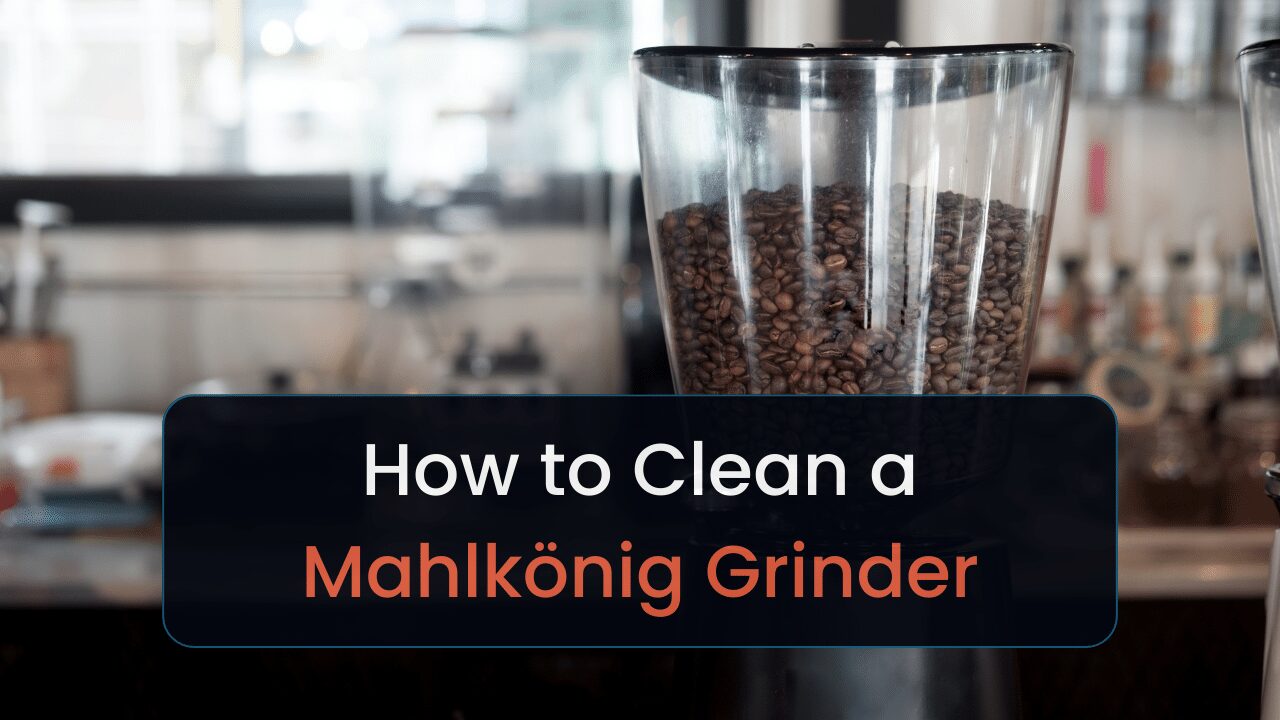I want to try as many espresso drinks as my body can handle. That led me to create this guide on all the different drinks including espresso.
While reading, you’ll find the following:
Let’s get to it.
Key Takeaways
- Espresso drinks combine espresso shots with various ingredients
- Serve these drinks hot or over ice
- You must froth (aerate) milk to create certain drinks
- Espresso isn’t the same as coffee; the former has a more intense flavor
Espresso Drinks Explained
Espresso-based drinks combine espresso shots with other ingredients. They create a variety of flavors and textures to suit different tastes.
Common examples include:
- Cappuccino: Espresso, steamed milk, & frothed milk create a rich and creamy drink.
- Latte: Espresso & steamed milk mingle, providing a smooth experience.
- Americano: Diluting espresso with hot water makes a milder yet robust flavor.
- Macchiato: Espresso gets a slight touch of frothed milk for a bolder, less creamy taste.
- Mocha: Espresso, steamed milk, & chocolate syrup unite for a sweet treat.
Let’s check out the different drinks available.
Different Types of Espresso Drinks & How to Make Them
Here’s a list of all the most popular espresso-based drinks:
| Coffee Drink | Ingredients |
| Americano | Espresso shots, hot water |
| Latte | Espresso, steamed milk, milk foam |
| Red Eye | Coffee, espresso |
| Black Eye | Coffee, double shot of espresso |
| Dripped Eye | Coffee, triple shot of espresso |
| Lazy Eye | Coffee, quadruple shot of espresso |
| Cappuccino | Espresso, steamed milk, milk foam |
| Manilo Long Black | Espresso, hot water, lemon peel |
| Flat White | Espresso, microfoam (steamed milk with small, fine bubbles) |
| Cubano | Espresso, demerara sugar |
| Café Crema | Espresso, hot water, crema (a layer of foam that forms on top of the espresso due to pressurized brewing) |
| Zorro | Doppio, hot water, steamed milk |
| Cortado | Espresso, steamed milk, small amount of milk foam |
| Café Breve | Espresso, steamed half-and-half |
| Espresso Romano | Espresso, lemon peel |
| Guillermo | Mocha, orange peel |
| Irish Coffee | Coffee, Irish whiskey, sugar, heavy cream |
| Vienna Coffee | Espresso, whipped cream, chocolate shavings |
| Galão | Espresso, steamed milk, foam |
| Macchiato | Espresso, dollop of milk foam |
| Long macchiato | Double espresso, dollop of milk foam |
| Mocha | Espresso, chocolate syrup, steamed milk, milk foam |
| Marocchino | Espresso, cocoa powder, steamed milk, milk foam |
| Rápido y Sucio | Espresso, Mexican coffee liqueur |
| Freddo Cappuccino | Espresso, cold milk, ice cubes, milk foam |
| Affogato al Caffe | Espresso, vanilla ice cream |
| Café Medici | Double espresso, orange peel, chocolate syrup, whipped cream |
Ingredients in popular espresso-based drinks compared.
22 Types of Hot Espresso Drinks
The following sections will cover the following:
- Brief description of each drink.
- Their average caffeine content.
- The steps necessary to make it.
Keep reading and try all the drinks you can.
1. Americano
| Average Caffeine Content * | 63 mg |
| Ingredients | Espresso & hot water |
An Americano is a coffee beverage made by adding hot water to a shot of espresso, diluting the intensity while maintaining its flavors.
Ingredients:
- 1 shot (1 oz / 30 ml) of espresso
- 6 oz (177 ml) of hot water
Steps:
- Brew a shot of espresso (1 oz / 30 ml) using an espresso machine.
- Pour the espresso into a cup or glass.
- Heat 6 oz (177 ml) of water to near boiling, typically around 200 °F (93 °C).
- Slowly pour the hot water over the espresso, maintaining the crema (a thin foam layer).
- Stir gently, if desired.
2. Latte
| Average Caffeine Content * | 63 mg |
| Ingredients | Milk foam, milk, & espresso |
A latte is a coffee beverage combining an espresso shot with steamed milk and a thin layer of foam. Creating a creamy and slightly sweet drink.
Ingredients:
- 1 shot (1 oz / 30 ml) of espresso
- 8 oz (237 ml) of milk—whole, skim, or non-dairy
- A thin layer of foam
Steps:
- Brew a shot of espresso (1 oz / 30 ml) using an espresso machine.
- Pour the espresso into a cup.
- Steam 8 oz (237 ml) of milk using a steam wand or milk frother, creating a velvety texture & a small amount of foam.
- Slowly pour the steamed milk over the espresso, creating a uniform blend of espresso & milk.
- Spoon a thin layer of foam on top of the latte.
3. Red Eye
| Average Caffeine Content * | 158 mg 95 mg (coffee) + 63 mg (espresso) |
| Ingredients | Espresso & brewed coffee |
Red eye is a caffeinated beverage consisting of brewed coffee mixed with a shot of espresso.
Ingredients:
- 6 oz (170 ml) brewed coffee
- 1 shot (1 oz / 30 ml) of espresso
Steps:
- Brew 6 oz of coffee.
- Prepare 1 oz of espresso using an espresso machine.
- Pour the brewed coffee into a cup.
- Add the espresso shot to the coffee.
- Stir gently.
4. Black Eye
| Average Caffeine Content * | 253 mg 190 mg (coffee) + 63 mg (espresso) |
| Ingredients | Brewed coffee & espresso |
A black eye coffee drink is a caffeinated beverage made by adding two shots of espresso to a cup of brewed coffee.
Ingredients:
- 6 oz brewed coffee
- Doppio: 2 shots (2 oz / 60 ml) espresso
Steps:
- Brew 6 oz of your favorite coffee.
- Prepare 2 oz of espresso (2 shots) using an espresso machine.
- Pour the brewed coffee into a cup.
- Add both espresso shots to the coffee.
- Stir gently.
5. Dripped Eye
| Average Caffeine Content * | 158 mg 95 mg (coffee) + 63 mg (espresso) |
| Ingredients | Brewed coffee & espresso |
A dripped eye coffee drink is a caffeinated beverage combining brewed coffee with a shot of espresso and cold brew coffee.
Ingredients:
- 6 oz brewed coffee
- 1 shot (1 oz / 30 ml) of espresso
- 1 oz cold brew coffee
Steps:
- Brew 6 oz of your favorite coffee.
- Prepare 1 oz of espresso (1 shot).
- Measure 1 oz of cold brew coffee.
- Pour the brewed coffee into a cup.
- Add the espresso shot and cold brew coffee to the cup.
- Stir gently.
6. Lazy Eye
| Average Caffeine Content * | 14 mg 4 mg (coffee) + 10 mg (espresso) |
| Ingredients | Decaffeinated coffee & espresso |
A lazy eye coffee drink is a decaffeinated beverage that combines decaf brewed coffee with a shot of decaf espresso.
Ingredients:
- 6 oz decaf brewed coffee
- 1 shot (1 oz / 30 ml) of decaf espresso
Steps:
- Brew 6 oz of your favorite decaf coffee.
- Prepare 1 oz of decaf espresso (1 shot).
- Pour the brewed decaf coffee into a cup.
- Add the decaf espresso shot to the coffee.
- Stir gently
7. Cappuccino
| Average Caffeine Content * | 63 mg |
| Ingredients | Espresso, steamed milk, & milk foam |
A cappuccino is a classic Italian coffee drink combining equal parts espresso, steamed milk, and frothed milk foam.
Isn’t that a latte?
A cappuccino is a coffee drink with equal parts espresso, steamed milk, and milk foam. A latte has more steamed milk and a smaller layer of foam. Resulting in a creamier texture and milder flavor.
Ingredients:
- 1 shot (1 oz / 30 ml) of espresso
- 1 oz steamed milk
- 1 oz milk foam
Steps:
- Prepare 1 oz of espresso (1 shot) using an espresso machine.
- Steam 1 oz of milk using a steam wand or frothing device, creating steamed milk and milk foam.
- Pour the espresso into a cappuccino cup.
- Gently pour the steamed milk over the espresso.
- Ensure you hold back the foam with a spoon.
- Top the drink with the milk foam, creating a dome shape.
- (Optional) sprinkle cocoa powder or cinnamon on top for garnish.
8. Manilo Long Black
| Average Caffeine Content * | 63 mg |
| Ingredients | Espresso & hot water |
A Manilo Long Black is a coffee drink that consists of a double shot of espresso poured over hot water, resulting in a robust and flavorful beverage.
It’s different from an Americano, though.
An Americano is a coffee drink made by adding hot water to a shot of espresso. A Manilo Long Black involves pouring a double shot of espresso over hot water. Preserving the crema and creating a stronger flavor.
Ingredients:
- Doppio: 2 shots (2 oz / 60 ml) espresso
- 4 oz hot water
Steps:
- Heat 4 oz of water to a temperature between 195 °F and 205 °F (90 °C 96 °C).
- Prepare 2 oz of espresso (2 shots) using an espresso machine.
- Pour the hot water into a coffee cup.
- Slowly pour the double espresso shot over the hot water, maintaining the crema.
- Stir gently, if desired.
9. Flat White
| Average Caffeine Content * | 63 mg |
| Ingredients | Espresso & steamed milk |
A flat white is a smooth, velvety coffee drink made from a shot of espresso with steamed, microfoamed milk.
I need to clear the air of something first.
A flat white coffee drink combines a shot of espresso with steamed, microfoamed milk. A macchiato consists of a shot of espresso topped with a small dollop of steamed milk and foam. Resulting in a bolder espresso flavor.
Ingredients:
- 1 shot (1 oz / 30 ml) of espresso
- 4 oz steamed milk with microfoam
Steps:
- Prepare 1 oz of espresso (1 shot) using an espresso machine.
- Steam 4 oz of milk, creating a silky microfoam with small, uniform bubbles using a steam wand or frothing device.
- Pour the espresso into a flat white cup or a small latte glass.
- Gently pour the steamed milk with microfoam over the espresso.
- This allows the milk to incorporate with the coffee, creating a smooth, velvety texture.
10. Cubano
| Average Caffeine Content * | 63 mg |
| Ingredients | Espresso & granulated sugar |
A Cubano is a sweet and strong coffee drink made from espresso brewed with sugar, creating a rich and bold flavor.
Ingredients:
- 1 shot (1 oz / 30 ml) of espresso
- 1–2 teaspoons (4–8 g) of granulated sugar
Steps:
- Add 1–2 teaspoons of granulated sugar into the bottom of an espresso cup, adjusting the amount to your taste preference.
- Prepare 1 oz of espresso (1 shot) using an espresso machine.
- Pour the espresso directly onto the sugar in the cup, allowing the hot espresso to dissolve the sugar.
- Stir the espresso and sugar mixture until the sugar is fully dissolved.
11. Café Crema
| Average Caffeine Content * | 189 mg |
| Ingredients | Espresso |
A Café Crema is a long espresso-based coffee drink with a velvety, creamy texture, topped with a rich layer of crema.
Ingredients:
- 3 shots ( 3 oz / 90 ml) espresso
Steps:
- Prepare 3 oz of espresso (3 shots) using an espresso machine
- Ensure each shot produces a thick layer of crema.
- Pour the espresso shots into a larger coffee cup or glass, preserving the crema.
- Allow the crema to rise to the top.
12. Espresso Romano
| Average Caffeine Content * | 63 mg |
| Ingredients | Espresso & lemon slice |
An Espresso Romano is a coffee drink consisting of a shot of espresso served with a slice of lemon on the side. The lemon cleanses your palate, which enhances the coffee’s flavors.
Ingredients:
- 1 shot (1 oz / 30 ml) of espresso
- 1 lemon slice
Steps:
- Prepare 1 oz of espresso (1 shot) using an espresso machine.
- Pour the espresso into an espresso cup.
- Place a slice of lemon on the side of the saucer or the rim of the cup.
- Enjoy your Espresso Romano by first sipping the espresso & then cleanse your palate with the lemon slice.
13. Guillermo
| Average Caffeine Content * | 126 mg |
| Ingredients | Espresso & lime slices |
A Guillermo is a coffee drink made by pouring espresso shots over fresh lime slices, often served with a touch of sweetened condensed milk on top.
Ingredients:
- Doppio: 2 shots (2 oz / 60 ml) espresso
- 2–4 lime slices
- 1 tablespoon (19 g) sweetened condensed milk (optional)
Steps:
- Arrange 2–4 lime slices in the bottom of a coffee cup or glass.
- Prepare 2 oz of espresso (2 shots) using an espresso machine.
- Pour the espresso shots over the lime slices, allowing the flavors to meld.
- (Optional) drizzle 1 tablespoon of sweetened condensed milk over the espresso & lime mixture.
- Stir gently before sipping if you add sweetened condensed milk.
14. Irish Coffee
| Average Caffeine Content * | 63 mg |
| Ingredients | Espresso, Irish whiskey, brown sugar, & whipped cream |
Irish Coffee is a spirited coffee drink made with espresso, Irish whiskey, sugar, and topped with a layer of lightly whipped cream.
Ingredients:
- 1 shot (1 oz / 30 ml) of espresso
- 1.5 oz Irish whiskey
- 2 teaspoons (8 g) brown sugar
- 1 oz lightly whipped cream
Steps:
- Brew 4 oz of your favorite coffee.
- Combine the espresso, 1.5 oz of Irish whiskey, and 2 teaspoons of brown sugar in a heatproof glass or mug.
- Stir until the sugar dissolves.
- Whip 1 oz of cream until it is slightly thickened, but still pourable.
- Gently pour the whipped cream over the back of a spoon onto the surface of the coffee mixture, creating a layer of cream on top.
15. Vienna Coffee
| Average Caffeine Content * | 69–83 mg 63 mg (espresso) + 6–20 mg (chocolate) |
| Ingredients | Espresso, & whipped cream |
Vienna Coffee is a traditional Austrian coffee drink made with strong brewed coffee, sweetened whipped cream, and often garnished with chocolate shavings or cocoa powder.
Ingredients:
- 1 shot (1 oz / 30 ml) of espresso
- 2 oz whipped cream, sweetened to taste
- Chocolate shavings or cocoa powder for garnish (optional)
Steps:
- Brew 6 oz of strong coffee.
- In a separate bowl, whip 2 oz of cream with sugar until it forms soft peaks, sweetening to taste.
- Pour the espresso into a coffee cup or glass.
- Dollop the sweetened whipped cream on top of the espresso, allowing it to float.
- (Optional) garnish the whipped cream with chocolate shavings or a dusting of cocoa powder.
16. Galão
| Average Caffeine Content * | 63 mg |
| Ingredients | Espresso & steamed milk |
A Galão is a popular Portuguese coffee drink made from espresso and steamed milk. Similar to a latte but with a higher milk-to-coffee ratio.
And this sounds like a macchiato. It isn’t.
A Galão is a Portuguese coffee drink made with a shot of espresso and a larger proportion of steamed milk. A macchiato consists of a shot of espresso with a small dollop of steamed milk and foam, highlighting the bold espresso flavor.
Ingredients:
- 1 shot (1 oz / 30 ml) of espresso
- 5 oz steamed milk
Steps:
- Prepare 1 oz of espresso (1 shot) using an espresso machine.
- Steam 5 oz of milk using a steam wand or frothing device.
- Pour the espresso into a tall glass or a Galão cup.
- Gently pour the steamed milk over the espresso, creating a smooth, creamy texture.
17. Macchiato
| Average Caffeine Content * | 63 mg |
| Ingredients | Espresso & steamed milk |
A macchiato is an espresso-based coffee drink marked by a small dollop of steamed milk and foam. Adding a touch of creaminess to the bold espresso flavor.
Ingredients:
- 1 shot (1 oz / 30 ml) of espresso
- 1 tablespoon (15 g) steamed milk & foam
Steps:
- Prepare 1 oz of espresso (1 shot) using an espresso machine.
- Steam a small amount of milk using a steam wand or frothing device, creating steamed milk & foam.
- Pour the espresso into an espresso cup or small coffee cup.
- Spoon a dollop of the steamed milk & foam onto the center of the espresso, creating a “stain” or “spot” on the surface.
18. Long Macchiato
| Average Caffeine Content * | 126 mg |
| Ingredients | Espresso & steamed milk |
A long macchiato is an espresso-based coffee drink made with a double shot of espresso and a small amount of steamed milk and foam. Offering a stronger flavor compared to a regular macchiato.
Ingredients:
- Doppio: 2 shots (2 oz / 60 ml) espresso
- 1 tablespoon steamed milk and foam
Steps:
- Prepare 2 oz of espresso (2 shots) using an espresso machine.
- Steam a small amount of milk using a steam wand or frothing device, creating steamed milk and foam.
- Pour the double espresso shot into a small coffee cup or a larger espresso cup.
- Spoon a dollop of the steamed milk and foam onto the center of the espresso, creating a “stain” or “spot” on the surface.
19. Mocha
| Average Caffeine Content * | 69–83 mg 63 mg (espresso) + 6–20 mg (chocolate) |
| Ingredients | Espresso, steamed milk, chocolate syrup, & whipped cream |
Mocha is a rich, chocolate-infused coffee drink made with espresso, steamed milk, chocolate syrup or cocoa powder, and often topped with whipped cream.
Ingredients:
- 1 shot (1 oz / 30 ml) of espresso
- 4 oz steamed milk
- 1 oz (29 ml) chocolate syrup or 1 tablespoon (3 g) unsweetened cocoa powder
- Whipped cream for topping (optional)
Steps:
- Prepare 1 oz of espresso (1 shot) using an espresso machine.
- Steam 4 oz of milk using a steam wand or frothing device.
- Combine the espresso with 1 oz of chocolate syrup or 1 tablespoon of unsweetened cocoa powder in a coffee cup, stirring until well mixed.
- Gently pour the steamed milk over the chocolate espresso mixture, creating a smooth, creamy texture.
- (Optional) top the mocha with whipped cream.
20. CaffèMarocchino
| Average Caffeine Content * | 69–83 mg 63 mg (espresso) + 6–20 mg (chocolate) |
| Ingredients | Espresso, cocoa powder, & steamed milk |
A Marocchino is an Italian coffee drink made with espresso, a layer of cocoa powder, and frothy steamed milk, often served in a small glass.
Ingredients:
- 1 shot (1 oz / 30 ml) of espresso
- 1 tablespoon (3 g) unsweetened cocoa powder
- 1.5 oz frothy steamed milk
Steps:
- Prepare 1 oz of espresso (1 shot) using an espresso machine.
- In a small, clear glass, create a thin layer of unsweetened cocoa powder at the bottom.
- Pour the shot of espresso over the cocoa powder, allowing the espresso to mix with the powder.
- Steam 1.5 oz of milk using a steam wand or frothing device, creating a frothy texture.
- Gently pour the frothy steamed milk over the espresso and cocoa mixture.
21. Rápido y Sucio
| Average Caffeine Content * | 63 mg |
| Ingredients | Espresso & ice cream |
A Rápido y Sucio, or “Quick and Dirty,” is a coffee drink made by pouring espresso over a scoop of ice cream, creating a rich, indulgent, and fast dessert beverage.
Ingredients:
- Doppio: 2 shots (2 oz / 60 ml) espresso
- 1 scoop of ice cream (your choice of flavor)
Steps:
- Prepare 2 oz of espresso (2 shots) using an espresso machine.
- Place a scoop of your favorite ice cream in a coffee cup or dessert glass.
- Pour the hot espresso shots over the ice cream, allowing the ice cream to melt slightly and create a creamy texture.
- Enjoy your Rápido y Sucio coffee drink with a spoon or sip it as the ice cream melts.
22. Café Medici
| Average Caffeine Content * | 64–68 mg 63 mg (espresso) + 1–5 mg (chocolate syrup) |
| Ingredients | Espresso, chocolate syrup, orange peel, & whipped cream |
A Café Medici is a coffee drink made with espresso, chocolate syrup, orange peel, and topped with whipped cream. Combining rich flavors for an indulgent experience.
Ingredients:
- Doppio: 2 shots (2 oz / 60 ml) espresso
- 1 oz chocolate syrup
- 1 strip of orange peel (about 2–3 inches long)
- Whipped cream for topping
Steps:
- Prepare 2 oz of espresso (2 shots) using an espresso machine.
- In a coffee cup or glass, pour 1 oz of chocolate syrup.
- Pour the hot espresso shots over the chocolate syrup, stirring until well mixed.
- Twist the strip of orange peel over the espresso and chocolate mixture to release the citrus oils, then drop the peel into the cup.
- Top the Café Medici with a generous dollop of whipped cream.
- Stir to combine the flavors as you sip.
That’s it for hot drinks. Let’s cover beverages that fit warmer days.
15 Types of Iced Espresso Drinks
Many of the hot espresso drinks mentioned earlier have iced counterparts, like:
- Iced Americano
- Iced latte
- Iced Red Eye
- Iced Black Eye
- Iced Dripped Eye
- Iced Lazy Eye
- Iced Cubano
- Iced macchiato
- Iced Long macchiato
- Iced mocha
- Iced Marocchino
- Iced Rápido Y Sucio
And here are a few iced drinks that don’t fall into the above categories.
13. Iced Zorro
| Average Caffeine Content * | 126 mg |
| Ingredients | Espresso & cold water |
An iced Zorro coffee drink has equal parts of espresso and cold water poured over ice.
Before you think it’s an Americano, read this:
A CaffèZorro is a double shot of espresso diluted with an equal amount of hot water. An Americano is a single shot of espresso diluted with more hot water. Resulting in a milder and larger beverage.
Ingredients:
- Doppio: 2 shots (2 oz / 60 ml) espresso
- 2 oz cold water
- Ice
Steps to make Iced Zorro:
- Brew 2 oz of espresso.
- Fill a glass with ice.
- Pour the espresso over the ice.
- Add 2 oz of cold water to the glass.
- Stir gently to combine and enjoy.
14. Iced Freddo Cappuccino
| Average Caffeine Content * | 126 mg |
| Ingredients | Espresso & frothed milk |
An Iced Freddo cappuccino is a Greek coffee drink made with cold espresso, cold frothed milk, and ice.
Ingredients:
- Doppio: 2 shots (2 oz / 60 ml) espresso
- 4 oz cold frothed milk
- Ice cubes
Steps:
- Prepare 2 oz of espresso (2 shots) using an espresso machine, then chill the espresso in the refrigerator or by stirring it with a few ice cubes until cold.
- In a shaker or a jar with a tight lid, add 4 oz of cold milk and shake vigorously until the milk becomes frothy and increases in volume.
- Fill a glass halfway with ice cubes.
- Pour the chilled espresso over the ice.
- Gently pour the cold frothed milk over the espresso, creating a layered effect.
- Enjoy with a straw or a spoon.
- Stir to combine the layers if desired.
15. Affogato al Caffe
| Average Caffeine Content * | 63 mg |
| Ingredients | Espresso & ice cream |
An affogato al Caffèis an Italian dessert beverage made by pouring a shot of hot espresso over a scoop of vanilla ice cream. Creating a mix of hot and cold, sweet, and bitter flavors.
Before continuing:
An affogato al Caffèis a hot espresso shot poured over a scoop of vanilla ice cream. A Rápido y Sucio is made by pouring espresso over a scoop of any flavored ice cream. Creating distinct flavor profiles and combinations.
Ingredients:
- 1 shot (1 oz / 30 ml) of espresso
- 1 scoop of vanilla ice cream
Steps:
- Prepare 1 oz of espresso (1 shot) using an espresso machine.
- Place a scoop of vanilla ice cream in a coffee cup or dessert glass.
- Pour the hot espresso shot over the ice cream, allowing the ice cream to melt slightly and create a creamy, rich texture.
- Enjoy with a spoon, savoring the contrasting flavors & textures as you indulge.
Let’s move on to talk about drinks served at a place everyone knows and loves.
Hot & Iced Espresso Drinks at Starbucks
At Starbucks, you’ll find various espresso drinks, including [1]:
- Espresso: a classic single or double shot
- Americano: espresso diluted with hot water
- Latte: espresso with steamed milk & a light layer of foam
- Cappuccino: equal parts espresso, steamed milk, & foam
- Flat White: espresso with microfoam, creating a velvety texture
- Macchiato: espresso topped with a dollop of foam
- Cortado: equal parts espresso & warm milk, with minimal foam
- Mocha: espresso, steamed milk, & chocolate syrup, topped with whipped cream
After reading all this, you may not know what I’m talking about when I say “espresso.” Keep reading to learn why it’s NOT the same as coffee from a drip maker.
What is Espresso?
Espresso is a potent, concentrated form of coffee, produced by pushing hot water through finely-ground coffee beans. The 9–15 bars of pressure results in a rich, bold flavor, accompanied by a dense, silky layer known as crema [2].
How’s it different from black coffee, though?
Let’s explore the differences:
| Attribute | Coffee | Espresso |
| Taste | Mild to bold | Intense |
| Flavor | Varies by roast | Rich, bold |
| Aroma | Aromatic, nuanced | Strong, complex |
| Avg. Caffeine Content (mg) * | 95 (8 oz) | 63 (1 oz) |
Comparison between coffee and espresso based on attributes such as taste, flavor, aroma, and average caffeine content.
Now learn what an espresso maker is.
What is an Espresso Machine & How Does It Work?
Espresso machines are appliances that make espresso. Refer to the previous section to learn about the combination of processes that form espresso.
Here are more details:
The process involves heating water to 195 °F–205 °F (90 °C–96 °C). The machine then pushes it through the coffee grounds, extracting flavorful oils and creating a rich, smooth espresso.
Many types of espresso machines float around the market, though. These include:
- Manual Lever: Control pressure by pulling a lever.
- Semi-Automatic: start & stop water flow manually.
- The machine controls pressure; you control grind, tamp, & time.
- Fully Automatic: Handles water volume, pressure, & shot timing automatically.
- You grind & tamp the coffee.
- Super-Automatic: press a button to grind, tamp, & brew espresso automatically.
- Capsule Machines: use pre-packaged coffee pods for easy, consistent results, but with limited coffee options.
The differences among these machines stem from the control you give to your machine. The less control the maker has, the more you can customize the espresso to your liking.
What Are the Types of Espresso?
The different types of espresso are as follows:
| Method | Coffee Req. | Water Req. | Brewing Time | Caffeine Content * |
| Doppio | 14–20 g | 60 ml | 40 sec | 126 mg |
| Solo | 8–12 g | 30 ml | 25–30 sec | 50–70 mg |
| Long Shot | 8–12 g | 50–70 ml | 35–60 sec | 70–100 mg |
| Ristretto | 8–12 g | 15–20 ml | 15–17 sec | 25–30 mg |
Different types of espresso compared.
I cover details about these different espresso preparation methods in separate guides. Read them to learn more.
Steam & Froth Milk Compared
First off, what are these types of milk?
Steamed milk has these characteristics:
- Heated milk: Warmed using a steam wand on an espresso machine.
- Velvety texture: Tiny air bubbles create a smooth, creamy feel.
- Microfoam: Consistency resembles wet paint.
- Sweet flavor: The heating process enhances milk’s natural sweetness.
Steamed milk is best for drinks that call for a creamier, smoother texture.
Frothed milk has these characteristics:
- Aerated milk: Whipped with a steam wand or frothing device.
- Fluffy texture: Lots of air bubbles make it light & airy.
- Macrofoam: Larger bubbles than steamed milk, resembling meringue.
- Less sweet: Less focus on natural sweetness due to aeration.
Frothed milk works better in beverages that need a lighter, airier foam.
With its velvety texture, steamed milk is perfect for lattes and flat whites. It complements the espresso’s bold flavor without overpowering it. The smooth consistency of steamed milk also makes it ideal for latte art [3].
Frothed milk has a light, airy texture. It sits on top of drinks like cappuccinos, adding a contrast to the strong espresso. The fluffiness of frothed milk offers a different mouthfeel and adds visual appeal to the drink.
Popular Brands that Serve Espresso-based Drinks
Here are a bunch of popular places that’ll serve espresso-based drinks:
| Business † | Coffee Beans Used |
| Starbucks | Espresso Roast |
| Dunkin’ Donuts | Espresso-Style |
| McDonalds | Arabica |
| Burger King | Arabica |
| Panera | Caribou Coffee Blend |
| Tim Hortons | Tim Hortons Espresso Coffee |
| Costa Coffee | Costa Coffee Beans Signature Blend |
| 7-Eleven | Arabica |
| Dutch Bros | Private Reserve |
| Scooters | Arabica |
| Einstein Bros. Bagels | Caribou Coffee Blend |
Restaurants that serve espresso-based drinks.
† Drink availability will vary by restaurant. Not all countries serve the same drinks.
I couldn’t find specific bean blends most places offer. But I did the best I could with the resources available.
Can you make Espresso without a Espresso machine?
Yes, you can make an approximation of espresso without an espresso machine.
However, please remember that it might not be exactly the same as espresso made with a professional machine.
Because a real espresso requires a high pressure (9-15 bars) during extraction, here are a few methods:
- Moka Pot or Stovetop Espresso Maker: While this method doesn’t create quite the same pressure as an espresso machine, it gets close. Fill the bottom chamber with cold water, the filter basket with espresso ground coffee, then assemble and place it on the stove until it starts gurgling. The result is a strong coffee that resembles espresso.
- AeroPress: This is a hand-press coffee maker. To use it, place a filter in the drain cap and rinse it with hot water, then add finely ground coffee and hot water into the chamber, stir, and then press the plunger down. This method uses a lower pressure than espresso machines, but the result can be quite similar.
- French Press: Add hot water to finely ground coffee, let it steep, then press the plunger down. The taste and texture won’t be the same as espresso (it’s missing the characteristic “crema” on top), but you’ll get a strong and bold coffee that you can use as a substitute in many espresso-based drinks.
Remember, each method will require some fine-tuning to get your desired result, such as adjusting the coffee grind size, the water temperature, or the brewing time.
Also, you should ideally use a darker roast coffee for something closer to espresso.
FAQs
Read on to find frequently asked questions about espresso drinks.
What Are the Different Types of Espresso Drinks Found in Coffee Shops?
Examples of espresso drinks, including lattes, cappuccinos, and Americanos. Others include macchiatos, cortados, and flat whites, each featuring unique espresso-to-milk ratios and textures.
How is an Americano Different from a Regular Espresso Shot?
An Americano is different from a regular espresso shot as it’s diluted with hot water. Creating a milder flavor and larger volume like drip coffee.
What is a Ristretto, & How is It Different from a Standard Espresso?
A ristretto is a shorter, more concentrated espresso shot. Using less water but the same amount of coffee grounds. This results in a bolder, more intense flavor compared to a standard espresso.
How Does a Lungo Differ from a Regular Espresso & a Ristretto?
A lungo differs from a regular espresso and ristretto by using more water. Resulting in a milder flavor and larger volume compared to the other two concentrated shots.
How Does a Breve Differ from a Cappuccino or a Latte?
A breve differs from a cappuccino or latte in its use of half-and-half instead of milk. This creates a richer, creamier texture flavor compared to the milk-based espresso drinks.
What is the Difference Between a Red Eye, a Black Eye, & a Dead Eye?
A Red Eye consists of a shot of espresso added to drip coffee. A Black Eye has two shots, and a Dead Eye has three. Each variation increases the coffee’s strength and caffeine content.
Wrapping Up
Congratulations. Now you know how to make a million different types of espresso drinks. However, this post scratches the surface on making the “best” drinks.
Now that you understand how to make these drinks, you’ll need to find the best beans. Start your journey by learning the differences between espresso beans and regular coffee beans.
Footnotes:
* The actual caffeine content may vary depending on factors such as bean type, roast level, brewing method, and serving size.

